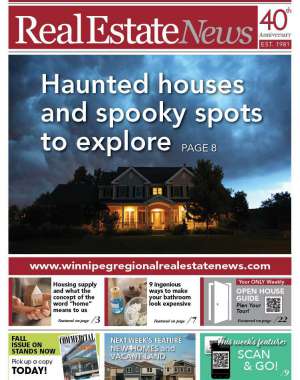By Peter Squire
Every year the Canadian Real Estate Association (CREA) brings REALTORS® together from across the country to meet with their local MPs on issues of importance related to housing.
In pre-pandemic times, REALTORS® would travel to Ottawa in person to meet their MPs over the course of several days as part of a national advocacy event. Meetings with MPs are still being conducted this year — although virtually — to present recommendations and hopefully gain MP support with the goal being to have them bring these issues to their federal party caucus.
CREA represents 140,000 REALTOR® members working through 79 real estate boards and associations across Canada. For over 30 years they’ve met with Parliamentarians regularly to discuss their local housing markets and advocate for policies supporting responsible homeownership.
As Diane Usher, the chair of CREA’s Federal Affairs Committee, said in her message to fellow members, “Whether it be owned or rented, during the COVID-19 pandemic, no one has been spared from reflecting on what the important concept of ‘home’ means to them. REALTORS® see first-hand the anxiety Canadians feel in today’s housing markets and know the challenges they face when it comes to owning a home. We want to help Canadians find their ideal place to live — and make sure the goal of homeownership is within reach.”
The first CREA recommendation — which was something all three main federal parties addressed in their 2021 federal election housing platforms — is housing supply. It is actually called “housing supply and infrastructure” because without the latter you will not be able to build the necessary housing that Canadians need as the country continues to see its population grow. Everyone needs a place to live. And now — more than ever before — finding a home that is attainable is becoming increasingly challenging.
In fact, Canada already has a housing deficit as pointed out in a study Scotiabank did this year where it determined that our country has the lowest number of housing units per 1,000 residents of any G7 country. Our housing supply has been falling since 2016 because of large population increases. Scotiabank says an extra 100,000 dwelling units would have been required to keep the ratio of housing units to population stable since 2016. Quite simply, new housing construction is not keeping up with demand.
And as brought up by CREA’s senior economist, Shaun Cathcart, at the delegate member briefings, it is not just the number of housing units which are deficient, it is the mix of housing which will be required. For example, the current increase in new multi-family rental units being built in cities such as Winnipeg will not meet the strong millennial desire (over 5 million from ages 30 to 39 in this country) for family-friendly homes.
One way CREA is recommending the federal government help kickstart more housing construction across the entire housing spectrum is by adding housing clauses to the Infrastructure Bilateral Agreements between Infrastructure Canada and provincial, territorial and municipal partners.
By doing this, it can bring in incentives to encourage a more balanced, fair and sustainable approach to planning that recognizes the full continuum of housing that exists in Canada, incentivize provinces, territories and municipalities to increase housing density while expediting approval processes, encourage the government to convert properties it owns into housing units, and provide incentives for local governments to build capacity to undertake the planning and infrastructure they will need to increase housing supply.
Another CREA recommendation which will clearly be charged with addressing housing supply — if it is acted upon by the federal government — is a national housing roundtable. As is explained in this recommendation, to deal effectively with the challenge of increasing housing supply, a coordinated effort between the federal government, provinces, territories and municipalities is required. There is a need for a collaborative, multi-stakeholder process to identify the factors limiting the supply response of all forms of housing: owned, rental, affordable, single-family,
and multi-family.
Moreover, CREA recommends that the federal government should convene a permanent national housing roundtable that brings together federal, provincial, and municipal authorities along with builders, real estate professionals and civil society organizations, to document the multiple challenges preventing an increase in housing supply while identifying solutions to these obstacles. The roundtable would also prioritize the development of processes to help reduce red tape and other systematic delays that continue to hold new construction back.
CREA’s local real estate boards have excellent market intelligence at their fingertips to note where
deficiencies and tightness of different housing type supply exist within their market regions. They also work closely with home builders and developers to understand what — at the local level — is necessary to successfully develop new housing. This was made evident in the early 2000s when the Winnipeg Regional Real Estate Board (WRREB) became very active with other interested stakeholders in ensuring Waverley West was approved and came on stream to meet future housing demand.
As for red tape and expediting building permits, WRREB currently serves on an Industry Advisory Group, which was originally spearheaded by the Manitoba HomeBuilders’ Association (MHBA) and the Winnipeg Construction Association (WCA), to work with the City of Winnipeg to improve its permit approval process for residential and commercial construction.
Speaking of the home builders, WRREB and its over 2,000 members is proud to get behind MHBA’s Fall Parade of Homes which is running now until November 7. This event features over 100 new show homes and will give you an indication of what is in store as we ramp up to build more housing to meet current and future demand in our province. Detailed information, including pandemic-related measures on all locations for show homes — across Winnipeg and in surrounding RMs including Brandon — can be found at the Parade of Homes page at homebuilders.mb.ca
When doing a quick perusal this week of some of the MLS® designated area’s market sales activity, which make up WRREB’s regional MLS® system — while it is true most sales are resale homes — new builds are successfully sold by REALTORS® on the MLS®. Two areas worth noting are the RM of Ritchot (includes St. Adolphe and Niverville) as nearly 30% of its MLS® sales this year were new or planned new builds, while the RM of Macdonald (which includes Oak Bluff and
La Salle) is at 23%.
More than ever, our home has become our sanctuary. It’s essential that everyone has access to that stability and security. The WRREB and your local REALTORS® continue to advocate for your right to housing, not just on a provincial level, but at the federal level as well.
Peter Squire is the Winnipeg Regional Real Estate Board’s Vice-President, External Relations & Market
Intelligence.



